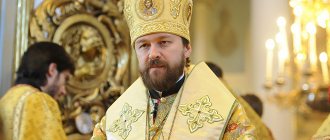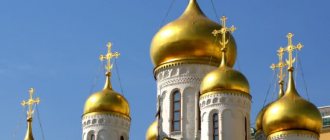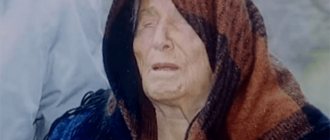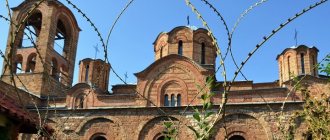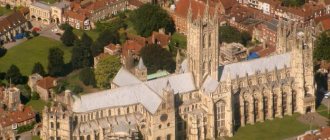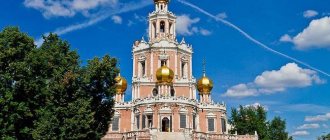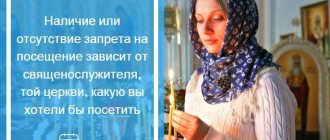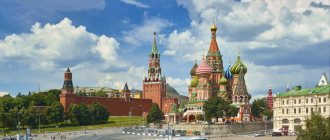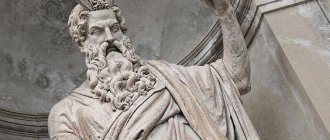Famous soothsayer
The biography of this amazing woman is told in many sources. For example, information about her is contained in the book “50 Famous Soothsayers and Clairvoyants,” written by a team of authors: Valentina Sklyarenko, Tatyana Iovleva, Yana Batii and Maria Pankova.
The daughter of simple peasants Pande and Paraskeva Surchev, who was named Vangelia, was born in 1911 in the town of Strumice. The girl was left an orphan early and was raised by her stepmother. When the future seer was 12 years old, the family moved to the town of Novo Selo. Vanga had an accident there. Finding herself in the very epicenter of a hurricane, she almost died and lost her sight forever. When the adults found the child, they discovered that the girl’s eyes were completely filled with sand. All attempts by doctors to overcome blindness were unsuccessful.
When Vangelia was 18 years old, she almost died again. This time - from pleurisy. During a serious illness, the girl saw a prophetic dream. A horseman in a halo of light warned her about the imminent outbreak of World War II and promised the manifestation of a prophetic gift. And so it happened. Soon all neighbors and acquaintances already knew that Vanga was able to predict the future.
In 1942, she married Dimitar Gushterov and moved with him to the city of Petrich. More than 500 thousand people attended a reception with the fortuneteller, whose fame quickly spread beyond Bulgaria. A special hotel was even built near her house for people who wanted to get an appointment with the famous Vanga. In her old age, at her own expense, she erected the Orthodox Church of St. Petka in the town of Rupite, which was consecrated on October 14, 1994. The seer died in 1996 from cancer.
Temple of Vanga in the village. Rupite Bulgaria
Temple of Light Petka Bulgarska
I have long been planning to write an article about the temple “Sveta Petka Bulgarska”, a temple built in the village of Rupite, the place where world-famous Vanga was born, lived and received visitors
. Author:
Tamara Polyakova
On my website I introduce my compatriots to all aspects of life in Bulgaria: problems and their solutions, way of life, traditions, sights of the country, prices, tariffs, real estate and much more. Detailed information is in the about me section.
auto RU
People's attitude towards Vanga is not clear, especially after her death. But in my article I will not write about this, I do not have this knowledge so well. Even while living in Russia, we considered Vanga a phenomenon, a prophetess, a clairvoyant. And when I settled in the city of Sandanski, 12 kilometers from the village of Rupite, I naturally wanted to go there and see both the village and the temple with my own eyes.
Actually, Vanga had an apartment in the city of Petrich. Petrich is like a regional center, by our Russian standards, which includes the city of Sandanski and the city of Melnik. And until the temple was built, Vanga received visitors in Petrich. Today in Petrich, in Vanga’s house there is a museum.
The village of Rupite is located in the Petrichesko-Sandan basin, on the site of the crater of the former Kozhukh volcano, the only volcano in Bulgaria. By the way, Vanga also spoke about the presence of an ancient volcano here. In this pit grows a wide variety of fruit trees that are not found everywhere in Bulgaria: persimmons, pomegranates, figs, peaches, nectarines, apricots, quince, apples, pears, plums, grapes.
garden
The volcano died out 10 centuries ago, but even today you can see its ancient presence in the form of gushing hot (+75 degrees) springs rich in sulfur and various amazing healing plants that Vanga used in the treatment of many human diseases.
The village of Rupite is surrounded on all sides by mountains. It combines cosmic energy, clean air, healing mineral springs, peace and quiet. And even in winter, the air temperature in this place is higher than in nearby villages.
Everyone knows that Vanga’s healing abilities, her ability to predict the future, she used in treating people, used various herbs and prepared compositions for each person individually.
In 1962, the village of Rupite was declared a zone where animals and vegetation are protected.
entrance
On the territory of the Sveta Petka Bulgarska temple there is a magnificent park with fruit trees, benches in the shade of bamboo and trees. There are small museum buildings where Vanga lived and received visitors, and houses where temple employees live.
There is a small cafe here where you can sit with a cup of coffee or eat ice cream. Next to the cafe there are two hot lakes, with streams and gushing hot fountains.
If you look up from the lakes, you will see a huge cross made on the opposite rock in the form of steps rising to the top of the cross.
cross
A neat path leads to the “Sveta Petka Bulgarska” temple, then a bridge over a stream, in front is the temple, on the left is a sculpture of Vanga.
Sculpture of Vanga
By the way, she appeared at the end of 2011.
Next to the temple on the right is Vanga's grave. She bequeathed to bury herself here. And this will was fulfilled.
grave next to the temple
In 1994, according to the design of Vanga’s friend, architect Svetelin Rusev, a chapel was built in Rupite, which the Orthodox Church of Bulgaria did not consecrate due to non-canonical architecture and paintings that did not comply with church rules. The chapel is now called a temple.
Entrance to the temple
The temple was built with Vanga’s own funds, sponsors and ordinary citizens of Bulgaria and other countries. The temple was named after Petka Bgarskaya.
The painting of the church was done by Svetelin Rosev, the woodcarver - Grigor Paunov, the iconostasis, sculptors, the making of the cross - Krum Damyanov, a team of masons - everyone worked for free.
Inside the temple
And despite the fact that the temple is not consecrated, the fact is that a lot of tourists come to it from Bulgaria, Russia, Ukraine and other countries. Every tourist who comes to Bulgaria considers it his duty to visit this place, some out of curiosity, some who want to touch the place where the great ancestor lived.
We also can’t help but talk about the pools for those who want to take hot baths from the famous springs.
Immediately behind the wall of the temple territory there is a natural spring with mineral water. A place has been built here where everyone can collect water in bottles and take both water and mud baths in a small lake, although they are hot.
Swimming pools were also built here. One is shared with a green artificial lawn, sun loungers and umbrellas. And two others - men's on the left and women's on the right, where visitors can take baths from hot mineral water, relax, drink soft drinks under umbrellas.
These pools are very popular and not only tourists come here, but also residents of Sandanski and Petrich.
In the valley of the village of Rupite, on the territory of the temple, you feel a surge of positive energy and peace, and this feeling does not go away for a long time. Memory constantly returns to these places.
Sincerely:
If you liked my article, tell your friends and acquaintances about it, click the social network buttons below. You can also leave your comment and write your opinion about the article. This will help me eliminate possible shortcomings in my work on the site in the future. Thank you, my dear readers, for your understanding!
Clergy opinion
Religious ministers, as a rule, have an extremely negative assessment of the activities of various psychics, sorcerers and healers. If in the Middle Ages such people were brutally tortured and then burned at the stake, now they are usually called charlatans.
According to spiritual shepherds, only firm faith can protect a person from the machinations of evil spirits. And trying to find out your own future is a sin, because the fate of a person is God’s providence. So the attitude of the Orthodox Church towards Vanga has always been wary at best. Hieromonk Job (Gumerov) believes that the Bulgarian fortuneteller was under the influence of dark forces.
“A person, limited by the physical body, cannot cognize the other world with his own strength. The Holy Scriptures and the Holy Fathers speak of two sources of our knowledge of the supersensible world: the revealed and the demonic. There is no third. Who gave Vanga information about the invisible world? Where did the awareness that amazed people come from?” - wrote Hieromonk Job (Gumerov).
Based on the memoirs of Krasimira Stoyanova, Baba Vanga’s niece, religious leaders believe that this unique woman was possessed by demons in her own way. After all, sometimes she fell into a kind of trance, during which she made her predictions.
In Krasimira Stoyanova’s book “Vanga the Clairvoyant and Healing” the following words of the soothsayer are given: “Oh, these forces, small forces that are always next to me. But there are also big ones, their bosses. When they decide to speak through my mouth, I feel bad, and then I’m broken all day long...”
Representatives of the Orthodox Church believe that only fallen spirits can take away a person’s life energy during mystical contacts. After all, angels, on the contrary, fill believers with positive emotions and give people confidence.
Another indirect evidence of Vanga’s obsession is the following recollection of her niece: “Only sometimes we could not understand why our aunt turns pale, why she suddenly feels bad and a voice suddenly comes from her lips, striking us with its strength, unusual timbre, words and expressions, which are not in Vanga’s regular dictionary.” According to Hieromonk Job (Gumerov), such behavior indicates that the human body has been taken over by some otherworldly hostile force, depriving people of their own will.
Strong icon of Vanga
One of the historical attractions of Bulgaria is the church, built at the expense of the famous Bulgarian seer Vanga. The icons of Vanga are considered an unusual exhibit of this church.
, painted by an unknown Bulgarian artist. Despite the fact that all the icons and the church itself were not created according to Orthodox canons, the local residents of Rupite are very proud of this landmark. Vanga’s predictions are partially coming true today. The Orthodox Church has a very skeptical attitude towards Vanga’s predictions. But, since her name is a long-term history of the Soviet people, many residents of the former USSR still consider Vanga the wisest woman on the planet. Many priests are unanimous in the opinion that what the soothsayer did had nothing to do with Orthodoxy, although she prayed a lot and believed that everything that is sent to people in life is the work of God. The seer herself remained blind at the age of 12 after a strong storm in which she found herself. Having almost died, she received the gift of seeing the past and predicting the future. In the post-war period, the Bulgarian authorities, in order to improve the financial situation of the country and increase the influx of tourists from other countries, themselves initiated visits to the local fortune teller for visitors. Without interfering with her activities, they helped Vanga become the most famous and in demand, and thereby glorify her country even more.
90% of a person's problems occur due to lack of luck, and as a result of money and happiness. To cancel the message of poverty, a strong energy charge is needed. The Money Ritual will allow you to find a permanent source of income and fulfill your dream, for this you need to take... Read more...
Church and icons of Vanga
In the village of Petrich, in a house built by her husband, the Vanga Museum was created. It has a prayer room in which Vanga’s favorite icon is kept. The seer never parted with her. This is an unusual gilded icon. According to eyewitnesses, the fortuneteller saw this shrine shortly before her death. She told her assistants that the most powerful icon in the world was shining in the cave. If this shrine is brought, it will give strength. The icon was found in the place where Vanga indicated. Since then, she prayed only to this amazing icon. The found icon of Vanga
was not similar to traditional Christian images, it had more of a Turkish origin. It is difficult to say whether this icon had any significance for the Vanga phenomenon. It is noteworthy that the unique image depicted on this ancient icon bears the name of a woman whom many Orthodox Christians consider a saint. Not a single seer of the twentieth century was awarded the recognition and love that surrounded this amazing and modest martyr, who experienced many troubles and misfortunes during her long life.
Tagged with: legends prayer enlightenment religion Christianity
Previous
Next
THIS IS A MUST READ
THIS IS A MUST READ
Daily lunar dental calendar for July 2021
08:11
Favorable lunar travel calendar for July 2021
21:31
Detailed lunar calendar of beauty and health for July 2021
05:12
Daily lunar calendar for creating a family for July 2021
23:57
Daily lunar calendar of money issues for July 2021
21:15
Daily lunar hair removal calendar for July 2021
19:23
Leave a comment Cancel writing
Conversations with the Dead
Another reason for the wary attitude of the Orthodox Church towards Vanga is her conversations with the spirits of the dead. As you know, the Old Testament negatively evaluates such practices. Kinga Leviticus contains the instruction: “Do not turn to those who call the dead, and do not go to wizards, and do not bring yourself to the point of defilement from them. I am the Lord your God” (chapter 19, verse 31). These words guide representatives of the religious clergy of three world religions: Judaism, Christianity and Islam.
Vanga herself has repeatedly admitted in her numerous interviews that she communicates with the spirits of the dead. When a visitor came to her, she saw his deceased relatives next to the person, who told her all the necessary information. Most religious leaders fear that, under the guise of deceased ancestors, representatives of evil forces come to psychics who seek to confuse people, deceive and direct them along the wrong path.
Moreover, such esoteric spiritual practices are themselves condemned by the church fathers. And after her death, Vanga was made their banner by representatives of various faiths seeking to revise Christian dogmas.
However, the Orthodox clergy does not personally accuse the soothsayer of anything. She is considered, rather, a victim of evil forces. Thus, Hieromonk Job (Gumerov) wrote: “Vanga herself did not realize that she was communicating with the world of fallen spirits. Nor did her many visitors understand this.”
LiveInternetLiveInternet
We visited a new attraction in Bulgaria: a place called Rupite, where Vanga’s house and a temple built with her money are located. Although my attitude towards prophecies and Vanga is more than skeptical, I looked with genuine interest at everything that the Bulgarians showed and told with reverence.
And they told me this: Vanga chose the place for her house according to the energy with which she was charged in all subsequent years. Here, in her house, she received visitors. And in 1994, with money from donations, Vanga built the church “St. Petka of Bulgaria”. The church looks impressive, judge for yourself:
Entering the church, you notice tables on which icons and books about Wang are laid out for sale, then you walk into a beautiful spacious hall with icons and burning candles. The icons were painted by the Bulgarian artist Svetlin Rusev, but were not approved by the Holy Synod. But many still believe in the power of this place, in the power of Vanga, they still come to worship in this temple and then talk about the miracles that are still happening.
This is what it's like inside. Beautiful.
Coming out of the church, you notice Vanga’s grave, and a few meters away is the house in which she lived. Everything in it is still preserved in its original form: as if only a jacket thrown off a shoulder, an old bag on a hanger, modest furniture - one gets the impression that the owner is about to return.
But this was not all the interest of little Rupite; very close to the church there are hot springs of mineral waters with a temperature of 75 degrees Celsius, which are credited with healing properties. They help in the treatment of digestive organs, endocrine diseases, neurological, gynecological and skin diseases. There are even open-air baths for men and women. True, I didn’t dare to swim there: the green (supposedly healing) algae in the bathhouse, the unkempt lawn around and the group of gypsies coming for a swim somehow scared me away... but I began to look at the landscape with pleasure. Yes, the place is unusually calm and beautiful: mountains, greenery, gushing hot springs. You feel somehow special... This is probably the kind of energy Vanga was talking about.
True, Vanga also added that this is a special place and that a terrible fire once raged here, and under the volcano mountain that I am now looking at, a city was buried by fiery lava, which was inhabited by enlightened tall people, dressed in shiny clothes. And looking at the scalding spring above which steam rises, you suddenly easily believe this story.
Baba Vanga's Church
And yet the famous Bulgarian soothsayer was a woman of faith. It is no coincidence that in her later years she spent almost all her personal savings on the construction of an Orthodox church. Yuri Kosorukov and Zhenya Kostadinova co-authored the book “Great Prophets from Nostradamus to Vanga,” in which they told the story of the appearance of the Church of St. Petka in the town of Rupite.
“For many years, among her family and friends, the prophetess shared her dreams of building a Christian temple in which people would pray for the salvation of their souls, light candles for God and cleanse themselves of bad thoughts, becoming kinder,” noted the authors of the book.
It is noteworthy that representatives of the Orthodox clergy were extremely picky about the new temple. Vanga even complained about this in one of her interviews: “Some dogmas are not observed, you see... The bishop arrived, leaned on his staff and shouted: “This is against church canons!” Instead of saying hello and congratulating us on the completion of the temple.”
Vanga especially revered Saint Petka, who spent almost her entire life in solitude and prayer. And the fortuneteller often advised the psychics who came to her to join the faith, read religious literature in order to understand how important it is to properly use their own gift.
Baba Vanga, her Temple! I've been there!
I don’t even know where to start... there will be a lot written... for anyone interested, please see the cut...
My husband and I went to Bulgaria, we actually went skiing, but for a very long time I was haunted by my strong desire to visit the place where Baba Vanga and her temple were hosted! And one day I went on a long excursion... In the morning I got up inspired, it was so light inside... While we were driving, I periodically felt either creepy or scared, I can’t explain! I can’t even say for what purpose I was going... I just really wanted to get there... to touch a piece of the Legend... And so we arrived. I went out and, I don’t know how to describe it, but I didn’t feel anything there... I didn’t feel myself, my organs, it was as if I was freed from everything... I walked along the path... it seemed so soft, like a blanket! Of course, this monument-sculpture immediately caught my eye... But I was very afraid to approach it... But the girl literally pushed me, she said, “Go, I’ll take a photo of you...” I hesitated... but made up my mind. I came up, put my hand on hers and froze... I was very embarrassed.
On the right side of the monument there was a small bridge leading to the Temple. He was completely covered with vegetation, it seemed to have enveloped him... And the Temple was very mysterious to my perception...
Approaching the Temple, I began to look at the painting... goosebumps ran down my spine... I had never seen anything like this!
I can’t say it was fear... it was just misunderstanding... this was the first time I encountered such a painting.
I was separate from the group... I had no goal of treating this place as an object of curiosity... I walked and did what I wanted at the moment. I looked at the faces on the temple for a very long time, trying to understand...
And here is Baba Vanga herself...
I was very struck by the image of the girl... I couldn’t look at her for long, I felt cold inside...
I really wanted to go into the temple, I probably expected that the sensations there would be even more special... but no... I went in, and that feeling that usually envelops me when entering Temples was not there... empty... just empty... inside the Temple is very It’s cold, the candles are burning quietly... But as soon as I looked at the iconostasis, I didn’t feel good! They are different... As if they were alive, real and they were watching!!! There are no chic decorations on the images, they are simple, but they look so good that everything freezes inside! Taking pictures of them separately, I looked into their eyes... I just couldn’t tear myself away!
Coming out of the temple, on the right side, is the grave of Baba Vanga. I walked up... sat down... and began to behave in a way that was not typical for me... I started talking, even more likely just talking... talking about everything that came to mind, saying that I was sorry that she had such a difficult fate... about her I said it when I was a child.
Not far away stood the house where she received... such a small, cozy house... and this house is also part of one big legend!
Well, I would like to end with a very surprising phenomenon... Since Baba Vanga’s estate is located on a break in the plates - on a former volcano, there is a spring there, the hand cannot tolerate such boiling water, but something else surprises... this spring spilled into a small pond, the water temperature in it is +75 -80 degrees... and in this pond live little turtles and FISH - tiny little ones, and these little fish gather in a swarm especially in the place where the hot water comes from... HOW? No one explained it to me... may there always be a place for MIRACLE on earth!
“Vanga. Portrait of a modern witch"
If Vanga was not Orthodox, why was the temple she built consecrated? Why did a number of clergy communicate with her? Continuing the topic started by Alexander Dvorkin’s commentary, we turned for details to Hieromonk Vissarion, a resident of the Athos Bulgarian Zograf Monastery, the author of a dissertation on Vanga.
In the photo: the iconostasis of the temple built by Vanga; next to the iconostasis hangs an “icon” of Vanga herself, painted in the same style. Hieromonk VISSARION, resident of the Zograf Monastery in the name of the Great Martyr George on Mount Athos: “Indeed, many Bulgarians are confident in the holiness of Vanga. Over the 45 years of socialism, people have become so alienated from the faith that they cannot distinguish between God and the devil. This is the tragedy of Bulgarian society. And I consider the consecration of the temple built by Vanga a huge mistake. Only a person who knows neither the canons nor the Tradition, who does not understand the spirit of Christianity, can accept him as Orthodox. I can’t even call the icons in it painting—it’s dead painting. Above the throne hangs a portrait of Vanga, in which she blesses like a priest. It is difficult to imagine greater blasphemy. A woman cannot bless like that at all - an exception in icon painting is made for the Mother of God, and even then infrequently. Metropolitan Nathanael of Nevrokop understood this. A video recording has been preserved where he directly tells Vanga that this temple is contrary to the canons and cannot be consecrated, and Vanga in response speaks contemptuously about the canons. Why did the bishop consecrate it in the end? I can only guess. Then, in 1994, there was a schism in the Bulgarian Orthodox Church, almost all the authorities and the media supported the schismatics, they spoke and wrote hostilely about the Holy Synod. Probably, numerous admirers of Vanga blackmailed the metropolitan and threatened to go to the schismatics if he refused to consecrate the temple. I think he compromised in the hope that these people would slowly convert to Orthodoxy. One priest from the Nevrokop diocese, who was present at the consecration, told me that some of the direct participants (Priest Valentin Notskov, Deacon Orlin Andreev) had severe headaches during the consecration. God gave signs that it was not His will that they were carrying out, but human will. But Saint Athanasius the Great also said that we are obliged to serve not time, but God. You cannot go against Tradition. Naturally, the Metropolitan’s hopes did not come true - Vanga’s admirers did not come to faith. He is a canonical metropolitan, I respect his rank, but I consider that action a mistake, which I have repeatedly said and written about. A few months ago I published my master's thesis: “Vanga. Portrait of a modern witch." I read many of the stories told there about Wang in the books of her supporters and followers. For example, seamstress-milliner Emilia Adamova describes the following incident: “When my brother and I came to her, Vanga made such a strong contact with our deceased mother that she spoke in her words and in her voice for about an hour.” Naturally, Vanga had no way of knowing the past of strangers. The demons knew, and they forced Vanga to speak in someone else’s voice. Adamova, like many other admirers and followers of Vanga, talks about this with admiration, since she does not understand that her idol communicated with demons. And there are many such cases - she often spoke in male voices (for example, when she became seriously ill and the doctors could no longer help her). And one of my friends saw how in a monastery not far from Petrich Vanga could not venerate the icon of the Mother of God. He offered to help her - the icon was about five meters away, but she said she was tired. Then she and another pilgrim tried to bring it to the icon, and Vanga screamed in a voice that was not her own: “The strength will leave me.” When my book came out, Metropolitan Nicholas of Plovdiv invited me to his diocese, thanked me for the book, and said that it was high time to expose this witch. Metropolitan Gabriel of Lovech and Metropolitan Kirill of Varna also supported me. All these respected bishops are unanimous in the opinion that Vanga is not a saint, but a satanic phenomenon. I hope that soon the Holy Synod of the Bulgarian Church will express the official attitude of the Church towards Vanga. But the fight is just beginning. Alas, the authority of the Church in Bulgarian society is not as high as it was in the past. People notice the human weaknesses of priests and bishops, but do not understand the spiritual meaning of the Church. Many of them consider Vanga a saint, and today they are heard better than us. I know that in Russia many consider Vanga a saint. How is it possible, in the homeland of such great saints as Sergius of Radonezh, Seraphim of Sarov, and the Optina elders, to worship false holy sorcerers? But nothing can be done - the occult is quickly poisoning the consciousness of modern man. Therefore, we translated my book into Russian, have already published it in a small edition, and soon it will be available for purchase at the Kiev Pechersk Lavra. In Russia, some publishing houses have also become interested in the book. Recorded by Leonid VINOGRADOV
print version
Tags:
Spiritual life Superstition
Rupite - Vanga sanctuary, Melnik, Rozhen and Rila monasteries
From the hotel guide we bought a full-day excursion to Rupite, the Rozhen Monastery and the city of Melnik for 70 euros and the next day we went to the very south of Bulgaria.Our path flowed through narrow mountain gorges among low mountains covered with deciduous forest. At first the mountains were covered with snow, but as they moved south the snow disappeared. Then the mountains moved apart and receded into the background, and on both sides there were already green fields of bright winter crops.
And here is the turn to Rupite - the place where the fortuneteller Vanga spent the last years of her life. So to speak, a world-famous Bulgarian character (when the conversation came up about which famous Bulgarians we could name, we only remembered Cyril, Methodius and Vanga).
The place Vanga chose is truly unusual. This is a wide valley at the foot of the Kozhukh volcano destroyed as a result of the eruption. Steam from hot springs rises above the ground, and streams with hot water snake among the green grass.
Rupita
Hot springs in the Rupite valley
In the 4th century BC. The ancient city of Petra was located here. Having existed for 10 centuries, it was buried under lava during a volcanic eruption. A cross was laid out on the slope of the volcano in memory of the dead people.
As the guide told us, in this place it is always several degrees warmer than in the surrounding area, and we soon confirmed this.
Indeed, it was warm, the grass was green, the sun even appeared in the sky.
In 1992, at the expense of Vanga, the Church of St. Petka of Bulgaria was built here. It was consecrated only 2 years later; it was very different from an ordinary church.
Church of St. Petka of Bulgaria
Strange paintings at the entrance, a strange iconostasis with huge faces. There was something painful and unpleasant in the drawn figures and faces, causing internal rejection. As if not people, but alien creatures.
Murals in the Vanga Church
Portrait-icon of Vanga
They once said on TV that this church was consecrated for a large bribe. I remember the church in Talashkino near Smolensk, built according to Roerich’s design - our churchmen never consecrated it, although outwardly it was not as out of line with church canons as this one.
Next to the church is Vanga’s grave.
Vanga's grave
And across the river is her modest house, where she received people.
In general, the whole complex is decorated very nicely: white benches, a carved bridge, along the banks of the river there are thickets of young green bamboo, and southern conifers are planted throughout the territory: thujas, junipers, cypresses, cedars.
Near the largest thermal lake, guinea fowls walk in a fenced-off corner. Near the thermal lakes there are warnings: “Mineral water is 75 degrees. Kupaneto has been taken away." This hot water still contains special algae. Both water and algae, we were told, are extremely beneficial and cure a lot of diseases.
Then we went to the Rozhen Monastery.
As soon as we left the green valley of Rupite, the good weather and the sun ended, the sky became clouded with low clouds, and it began to snow. The road climbed higher and higher, and behind the windows on both sides high sandy outcrops appeared - the Melnik pyramids. They seemed simply a miracle of nature, something on the verge of the impossible. In appearance, it is made of ordinary sand, of various shapes, created as a result of the weathering of sandstones. Some of them reached great heights. There is, say, a finger of sand stretching into the sky, or a narrow pyramid, and for some reason it does not collapse.
Melnik pyramids
At a small parking lot we left the bus and walked up the mountain.
The path to the Rozhen Monastery
From the high plateau there was a wide view of the sandy steep walls. We were almost at the same height as them.
The Rozhen Monastery is located on a gentle peak. It was first mentioned in 890. Its favorable location - far from roads, on the top of a mountain - served as some guarantee of safety from the Turks, however, it was burned several times, and it was restored again.
The walls of the monastery are like those of a fortress, and the entrance is completely inconspicuous and cramped, from the corner.
In the center of the narrow courtyard is the Church of the Nativity of the Virgin Mary, along the perimeter are monastic cells of two or three floors with open wooden galleries.
Rozhen Monastery
A grapevine stretches from the church to the gallery, providing thick shade in summer.
Inside the church there are frescoes of the 17th century and an amazingly crafted carved iconostasis (kept separately, it was specially opened for us). The main shrine of the temple is the miraculous icon of the Virgin Mary. Since the monastery was a “branch” of one of the Athonite monasteries, most of the paintings were made in Athonite traditions.
Only 3 monks live in the monastery.
5 km from the monastery, almost on the border with Greece, is the town of Melnik, the smallest of the existing Bulgarian towns. Its population is about 200 people. The town is extremely picturesquely built into the surrounding landscape: a narrow gorge divided by a river, sandy cliffs of the Melnikov Pyramids and at the foot of the cliffs - white houses, one above the other.
Melnik
There are many mechanics, we had lunch in one of them. And we went up the gorge, where almost at the very end of the town on a hill stands the Kordopulova kyshta - the house-museum of a wealthy wine merchant. Down along the path are the ruins of an ancient temple.
The lower level of the house is a large hall for wine tasting and the entrance to an extensive network of caves in which barrels of wine are stored.
Above are spacious living spaces.
On the roof there is a terrace paved with stone, from which you can see the entire town, tightly squeezed by the mountains.
The town is like a museum. The unexpectedly large school building indicates that Melnik has known better times and life in this wine-growing region was vibrant. In the 13th century, he even visited the capital of the independent region of the despot Alexy Slav. At its peak there were 70 churches. Silent witnesses of the past are the vast 800-year-old plane trees along the banks of the river.
In general, we liked the excursion; we visited the south of the country, saw three interesting places, each of them unique. And I didn’t even expect to see such bizarre sandstone rocks; this is an undeclared bonus on top of the program.
We spent the remaining days on the slope, but there was little joy from skiing. We tried to arrive at the lift early, so we usually only stood (!) for about an hour. We found a route where it was possible to ski without a queue - on Chalin Volog: this is an intermediate station, a small peak between Bansko and Banderishkova Polyana. At the beginning of the route there is a steep ice couloir, which for many was an insurmountable obstacle, so there were few people skiing on this route. In the end, I overcame this couloir, one might say, in one breath, without even slowing down. And after it a good red track began. After 3 o'clock in the afternoon the queues usually ended at the top, so you could ski there too. And at the end of the skiing - the obligatory “May Day demonstration” after turning off the upper ski lifts, when all the skiers of Bansko found themselves on the same slope and rolled down in a single stream.
On the slopes of Todorka
Queue for the lift
Crowded conditions and bare ice on the slopes gave rise to injuries, and we often saw motorized sleighs with stretchers rushing after (or already with) another victim. And at dinner, you look, one has a broken nose, another has his forehead covered with a plaster, the third has his arm tied up.
I was very surprised by the large number of British people. And before that, in the fall we were in Turkey, there were so many of them there that prices for goods were first of all indicated in pounds, and only then in Turkish lira and other currencies. Here's a riddle. They don’t seem to be poor people, why do they gravitate so much towards cheap holiday destinations? And to the question: “Where are you from?” they will never say: “From Great Britain”, but always: “From Scotland” or “From Wells” or “From England”.
On the eve of departure, we decided to go see the Rila Monastery in the afternoon. The main argument for the trip were the words of the guide with whom we went to Melnik: “The Rila Monastery is the same attraction for Bulgaria as the pyramids are for Egypt.”
The drive there takes about two hours. The turn to the monastery is almost immediately after Blagoevgrad. And soon, far ahead, in the haze, the snowy peaks of Ril appeared, as if floating in the air.
We passed a narrow winding gorge and stopped at the high stone walls of the monastery. Not even tall - tall, like a good 5-6-story building.
Rila Monastery
The monastery itself is built on a spacious mountain ledge. Once upon a time, the Monk John of Rila retired from the world to these remote places, and by the 10th century, a monastery was built here by the hands of his associates and disciples. In the summer, tourists are taken to the cave in which the holy hermit lived.
Through the arch we entered the wide monastery courtyard. In the center of the courtyard there is an elegant, brightly decorated Church of the Nativity of the Virgin Mary, along the perimeter there are monastery buildings: cells, a refectory, a library, a museum; along all floors there are galleries with arches.
Khrel's Tower (XIV century) with belfry
The main decorative element of the monastery is the arches. They frame the residential buildings along the contour, surround the church on three sides, and there are also two arches on the tower in front of the bells. The gallery in front of the entrance to the church is painted very colorfully and it feels like it was just the other day.
Everything inside the church is also rich and elegant.
They showed us the cells of the monks - I had never seen such sybaritic cells before. At first we entered a small (but quite comfortable and not cramped) room, and I thought that this was a cell. But no, it turned out that this room was for a servant, and the next, more spacious and comfortable home was intended for the monk. By the way, in Bulgarian churches (as well as in Greek ones, however) you can sit during the service.
In general, the monastery gave the impression of being a little toy-like and unreal, very beautiful, all brand new. I liked the abandoned Rozhen Monastery much more; it had some kind of authenticity. It stands there, hidden high in the mountains, surrounded by strange sandy rocks. Detachment and silence. And in Rilskoye it’s very hectic.
In the evening we bought more souvenirs and prepared to leave.
The main Bulgarian souvenir is rose oil and cosmetics based on it. In the Kazanlak Valley (also called the Valley of Roses) a special variety of oilseed rose grows, from which oil is pressed.
Leather goods are inexpensive here, such as wallets, belts, bags. Lots of original ceramics.
For some reason, dolls are very common - hooligan Baba Yagas. When you clap, they begin to laugh hoarsely, sparkle their eyes, and move. They say they drive out evil spirits. These brawlers were made in China.
Local wine is quite good and cheap. A lot has been written about food and food, the food here is really excellent, just a paradise for food lovers.
In general, I must admit, Bulgarians give the impression of being hospitable, friendly and open people. Our languages are similar; if you want, you can always understand a friend, although sometimes you get into trouble because of the so-called “false friends of the translator.” For example, the word “to the right” means “straight”. “Bun” is a bride, “T-shirt” is a mother, and words starting with “chur,” including “chicken,” are obscene. Even more misleading is their head nodding, which means “no,” and their negative shaking, which actually means “yes.” You ask in a museum: “Can you take photographs?”, in response they nod their heads approvingly and say, “It’s not possible.” You ask in a cafe: “Bring me some beer.” The girl shakes her head as if with some regret and immediately brings beer. You even begin to wonder if they are as simple-minded and sincere as they seem at first glance.
By the way, although the Bulgarians expressed gratitude in every possible way to the Russians, who freed them from the 500-year Turkish yoke (after all, 300 thousand Russians died), however, in both world wars, Bulgaria, a Slavic and Orthodox country, acted as an ally of our enemy - Germany.
When we were in Greece, we were told that during the war (World War II) there were three zones of occupation: German, Italian and Bulgarian. The Italians did not cause much harm to the Greeks and are remembered mainly for their numerous romantic relationships with local girls. The German occupation is classic, like ours. But those who were occupied by the Bulgarians had the worst of it. This is all from the words of our Greek guide.
The country is not rich in attractions. The general pattern for all countries that were under the Turks is that there was a scorched spot in the cultural life of the country throughout the reign of the Turks. And in present-day Turkey, the main excursion sites (in addition to natural ones) are ancient Greek and Roman ruins.
Now Bulgaria has become a member of the European Union. It is expected that by October 2011 it will enter the Schengen zone. The question of the country's entry into the euro zone is not yet raised. We were told that the average salary in Sofia is about 250 euros, and in the country - 150 euros. Therefore, people travel to other countries in search of work.
The next morning, still in the dark, a bus picked us up with our things, and we went to the airport. I immediately fell asleep, and when I opened my eyes, our bus was descending from the pass along a steep and narrow gorge.
Then the mountains ended and the endless steppe began. And this steppe, judging by the map, extended all the way to the Black Sea.
And in Plovdiv our green plane was waiting for us, all alone on a huge airfield.
We immediately climbed into it and flew to Moscow.
In general, I don’t recommend going skiing to Bulgaria, especially on New Year’s. And not for the New Year either, since in the low season you can go to Austria for about the same money as to Bulgaria. Or, better yet, I won’t recommend anything, because everything, of course, is subjective, and I myself read reviews of people who were in Bansko at the same time as us and were satisfied with the skiing.
So take note and decide for yourself!
